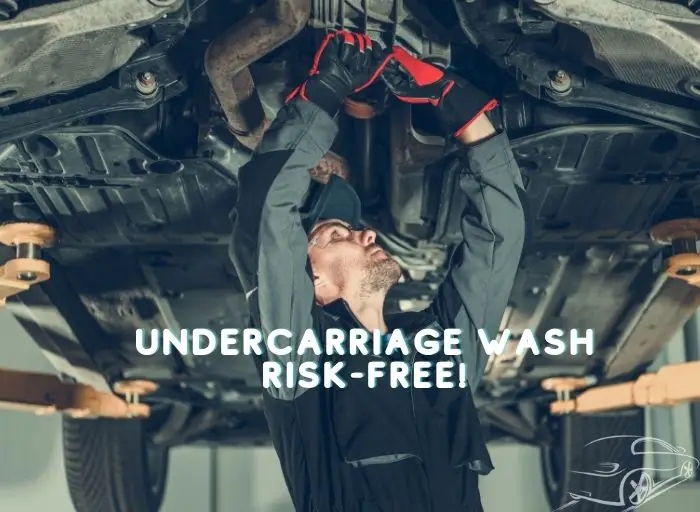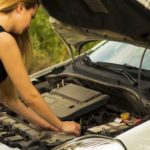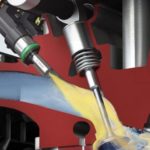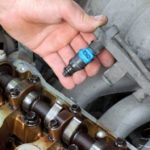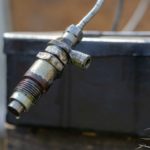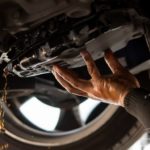
If your car is not in the best condition, it’s not unusual for you to need a wash job. Undercarriage washes are a simple and effective way to rid your vehicle of dirt, grime, bugs, dust bunnies — or whatever else may have accumulated under there. However, these “car washes” can be dangerous for the uninitiated. In this blog, I’ll give you an insight into undercarriage wash safety.
Table of Contents
Understanding Car’s Undercarriage
The undercarriage of a vehicle consists of components located underneath the chassis, including the frame, suspension system, axles, brakes, wheels and tires, and exhaust system.
The undercarriage plays a crucial role in vehicle performance, including:
- Stability and handling: The suspension system, axles, and frame work together to provide stability, control, and a comfortable ride.
- Traction and braking: Well-maintained undercarriage components ensure proper contact between tires and the road, enabling efficient acceleration and effective braking.
- Load bearing: The undercarriage supports the vehicle’s weight and distributes it evenly to prevent strain on individual components.
- Noise and vibration control: Proper alignment of undercarriage components minimizes noise, vibrations, and enhances the driving experience.
Issues Caused by Neglecting to Clean the Car’s Undercarriage
Neglecting to clean the undercarriage of a vehicle can lead to several issues, including:
Corrosion and Rust
Accumulated dirt, mud, and road salt can promote corrosion and rust formation on undercarriage components. This can weaken the vehicle’s structural integrity and lead to costly repairs or replacements.
Component Damage
Debris and contaminants that build up in the undercarriage can damage sensitive components such as suspension parts, brake lines, and exhaust systems. This can result in reduced performance, increased wear, and potential system failures.
Reduced Fuel Efficiency
A dirty undercarriage can increase the vehicle’s weight and cause aerodynamic drag, resulting in decreased fuel efficiency. The engine may need to work harder to overcome the resistance, leading to higher fuel consumption.
Impaired Cooling Systems
Due to dirt and debris, clogged radiator fins and transmission coolers can impede proper heat dissipation. This can result in overheating, reduced performance, and potential damage to the engine or transmission.
Safety Risks
Neglected undercarriage cleaning can lead to safety hazards. The build-up of debris can obstruct critical components, such as brake lines or suspension parts, compromising their functionality and increasing the risk of accidents.
Malfunctioning Sensors
Some modern vehicles have sensors located in the undercarriage for various systems, such as ABS (Anti-lock Braking System) or traction control. If these sensors become clogged or covered in dirt, they may provide inaccurate readings, affecting the performance of these systems.
Difficulties in Maintenance and Repairs
A dirty undercarriage can make it challenging for technicians to access and service components. Routine maintenance tasks may become more time-consuming and costly, as cleaning is required before repairs or inspections can be conducted effectively.
Regular cleaning of the undercarriage helps mitigate these issues, maintaining the vehicle’s performance, safety, and longevity.
Is Undercarriage Wash Safe?
Many car owners have this question or “is underbody car wash safe”? And I can say a big YES.
Undercarriage wash is generally considered safe when performed correctly and using appropriate methods and equipment. Undercarriage wash is specifically designed to clean the components located underneath the vehicle’s chassis and remove dirt, mud, road salt, and other contaminants.
Undercarriage Wash Safety: A Detailed Guide!

If you’ve ever gone through an automatic car wash with a wash brush, you’re already familiar with the basics of how undercarriage washes work. These machines employ powerful spinning brushes to scrub your vehicle clean. However, we’re not going to trust our car to some high-powered machine, will we? That’s why we’re going to give it a good scrubbing by hand instead.
Before You Wash
Before you start washing your undercarriage, ensure the ground is completely dry.
This may not be possible if you live in an area with a lot of rainfall. But, if it is, use a blower to dry it out. Otherwise, you could end up with dirty water dripping off of your undercarriage and back onto your paint job.
Start by jacking up your car on the ground. That way you’ll have instant access to even the lowest parts of your undercarriage – like the axle housing and wheel wells.
Items Needed
- Electric pressure washer
- Sandpapers (for rusted areas)
- A Wash Mitt
- Towels
Steps for a Safe Undercarriage Wash with a Pressure Washer
Before you start scrubbing, bring your garden hose to the highest possible setting. You’re going to need a lot of water pressure to get everything clean. If you don’t have enough water pressure, you’re going to need more than one hose, and there’s nothing worse than losing a battle with dirt and rust.
Attach your hose to a nozzle or spigot equipped with a “jet” setting.
Next, wash the underside of your car by following these easy steps:
• Start at the front of your vehicle
• Work from left to right
• Scrub each area thoroughly
• Rinse immediately after scrubbing
This is a safe alternative to hand washing if you have access to a power washer. However, it’s important that you use it correctly.
Just like with a garden hose, you want to be careful about spraying the undercarriage of your car. That’s why it might be safer to use a sprayer dedicated to car washes.
Safe Scrubbing
Now that you understand how to hand wash your undercarriage, the next step is to decide what you’re going to use to scrub your car. You’ve got a few options, and they’ll all work in a pinch.
If you’re not up for the task just yet, go grab some towels first. You don’t want to risk going through an entire undercarriage wash without ridding yourself of any debris that could end up on your paint.
Once you’ve got your towels in hand, you can choose between sandpaper or a wash mitt.
Sandpaper is an effective way to scrub away rust and grime. It’s also the most affordable option, so it’s great if you’re on a tight budget. However, this scrubbing material can damage the paint on your car if you’re not careful.
Find out: Why did I stop using a sponge for washing cars?!
It would be best to never use sandpaper on bare metal such as your rims without first protecting them with a coat of wax.
Wash mitts are the ideal tool for hand washing your undercarriage. They’re designed for one purpose only, and they do it well. You can pick up a wash mitt in most auto parts stores, and they’re also relatively inexpensive.
I recommend that you buy a wash mitt that’s about the width of your palm. That way, you’ll reach all the puddles between the wheel wells while standing on solid ground.

Cleaning Your Wheels
With that said, I can’t stress the importance of keeping your wheels clean enough! This is a mistake that many beginner hobbyists make. They want to get through their undercarriage wash as quickly as possible, fearing getting dirty. That’s no good. You want to take your time and give each part of your undercarriage a good scrubbing, including your wheels.
If you don’t, you’ll end up with a blank canvas of dirt and grime to work with. It could take weeks to remove the grunge already embedded in your wheels.
What About Rust?
Rust is one of the toughest enemies of undercarriage washes everywhere. Rust and paint don’t exactly get along, and there’s no way to get your car clean if it’s covered in rust. That’s why you want to ensure your car is rust-free before you start washing it.
Unfortunately, there’s no way to be completely sure of your car’s integrity before you’ve started scrubbing. But there are a few simple steps that you can take while you’re on the road to ensure that your undercarriage is fully rust-free before a wash is even possible.
First and foremost, make sure to inspect wheels that have had any damage. If you see any signs of rust underneath, you’ll want to act on your car immediately.
Next, keep your tires in top-notch condition. If you have any ruts or potholes in your driveway, you’ll want to cover them up regularly. You can’t wash your undercarriage if dirt and dust are hiding underneath your tires.
Check out this video for more detail!
What Can Go Wrong With Incorrect Undercarriage Washing
If you aren’t sure, what damages can you make with incorrect undercarriage washing? Let me tell you. There are 3 possible problems:
#1 Damage to Underbody Coating
Many people think that a washed undercarriage isn’t a problem and that the cleaner your car is, the better. Clearly, this is not true.
Even in automatic vehicles, there are usually some delicate components under the hood. These components are coated with a coat of paint in order to protect them from water and debris.
Check out: How anyone can wash a car without scratching its paint!
But if you don’t wash under there regularly (or at all), then they’ll easily get damaged by water and dirt.
#2 Joint Protective Rubbers
Plastic and rubber components are the backbone of any car. If these components are not taken care of during undercarriage washing, they can become perforated.
The first sign of this damage is that the wash water begins to drip out from under your vehicle. Regular washing can solve this problem, but the joints will still wear out faster than expected. Sooner or later you’ll need to replace them if you want to avoid further damage.
#3 Car Electronics
Electronic car components need to be dried off after washing.
Here’s something that most people don’t know:
- Car electronics are some of the most expensive components in your car.
- Usually, they are located under the area, which we wash with the water jet during undercarriage washing. For this reason, after washing, you must make sure that these electronic parts do not get wet.
Frequently Asked Questions
#1 How often should you wash your undercarriage?
3-4 times/year
The best way to wash an undercarriage is to wash it as little as possible. This will allow you to enjoy your car’s underbelly for many years.
Washing less often also means that you are not wearing down or damaging any of the protective coatings on your undercarriage.
If you want to wash more often than 3-4 times per year, then you should be washing only the visible parts of your car, like the wheel wells and frame.
#2 Do automatic car washes clean the undercarriage?
They do but not in an effective way.
Automatic car washes do not have enough pressure to wash the undercarriage properly. That’s because they have some pulse system that sends water into your car from all sides at the same time. This will not achieve proper cleaning results.
Check out: How to quickly dry your car’s seats in winter!?
#3 How do you degrease undercarriage?

The best way to degrease the undercarriage of your car depends on its condition. If your undercarriage has a lot of rust, then you can use a chemical degreaser to dissolve it.
After that, you can use a scourer to clean it. Finally, some prefer to do all of the work on the washing machine and then transfer it all into a tub for rinsing.
#4 Can I use regular household cleaning products for undercarriage wash?
Regular household cleaning products are not typically recommended for undercarriage wash. The undercarriage is exposed to more severe conditions and requires specialized cleaning products specifically designed for automotive use. These products are formulated to effectively remove dirt, grime, and road contaminants without harming the undercarriage components.
#5 Is it safe to use a high-pressure washer on the undercarriage?
Using a high-pressure washer on the undercarriage can be safe if done correctly. However, avoiding directly spraying sensitive components such as electrical connections, sensors, and exposed wiring is essential. Care should be taken to use the appropriate pressure setting and maintain a safe distance to prevent damage to vulnerable parts.
#6 Are there any specific brushes I should avoid using on certain surfaces?
When cleaning different surfaces of the undercarriage, it is advisable to avoid using stiff or abrasive brushes. These can potentially scratch or damage delicate components. Instead, use soft-bristle brushes or specialized undercarriage cleaning brushes designed to be gentle yet effective in removing dirt and grime.
#7 How long does the undercarriage wash process usually take?
The duration of the undercarriage wash process can vary depending on factors such as the level of dirt buildup, the efficiency of the cleaning equipment, and the thoroughness of the cleaning. Typically, it can take anywhere from 15 minutes to an hour or more, depending on the extent of cleaning required.
#8 Are there any signs that indicate my vehicle’s undercarriage needs cleaning?
A few signs indicate your vehicle’s undercarriage may need cleaning. These include visible dirt accumulation, mud caked on the undercarriage, salt or deicing agents on the components (especially in winter), and an increase in rust or corrosion on exposed parts. Unusual noises or vibrations while driving may also suggest the need for undercarriage inspection and cleaning.
#9 Will an undercarriage wash remove existing rust?
An undercarriage wash alone may not remove existing rust. Rust is a result of corrosion, and while cleaning can help prevent further corrosion, it may not eliminate existing rust. If there is rust on the undercarriage, it is advisable to consult a professional or utilize specialized treatments designed to remove or inhibit rust formation.
Final Words
Undercarriage washes are a great way to keep your car clean and in pristine condition. If you’ve never done one, you really owe it to yourself to give it a shot. But, if you’ve already done yours before some accidents, you’ll need to take extra precautions before treating your undercarriage again. Fortunately, there are several ways that you can do so safely and without damaging your paint job.
Hi everyone, My name is Ollie Barker.
As a seasoned auto expert I have 25 years of experience working in repair and detailing shops. I love to share my tips & tricks to all car lovers, so that’s why I’m here at Automotive Gearz publishing my content, sharing my passion. Also, I’ve been giving my recommendations on which products are the best to have on the market. I always thought it was hard to pick the right part, so hopefully I can make that a bit easier for you.
Hope you enjoy your time on my little blog!

